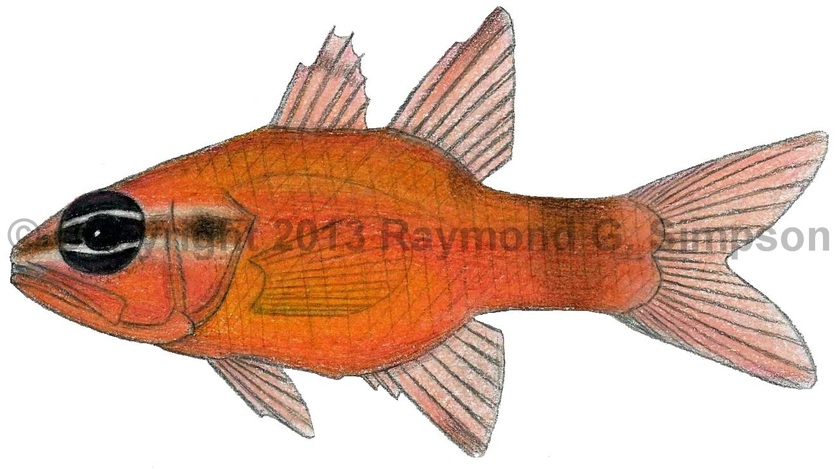
Common Name
Brazilian Cardinalfish
Year Described
Castelnau, 1855
Identification
Dorsal Fin: VI, I-9
Anal Fin: II, 8
Pelvic Fin: I, 5
Pectoral Fin: 12
Gill Rakers: 4-5 upper, 13-14 lower
Vertebrae: 10 precaudal, 14 caudal
A small fish with a fairly robust and moderately compressed body. Eye is large and the snout short. Mouth is fairly large and oblique, with the lower jaw slightly protruding. Both jaws, palatine, and vomer with narrow bands of villiform teeth (no canines). Preopercular edge with a serrate margin. Preopercular flap does not extend past the preopercular rear margin. There are two dorsal fins. The caudal fin is weakly forked to emarginate. Body scales ctenoid. Predorsal scales 6-8. Scales around caudal peduncle number 19-22 (usually 20). Lateral line scales around 23-26 (usually 24-25)
Color
Body bright orange-red to red (not translucent in adults), with a sprinkling of dark melanophores dorsally. A very diffuse circular blotch (smaller than eye) under second dorsal fin (alomost absent in some fish). A dark saddle blotch on the caudal peduncle varies from faint to obvious. A dark stripe passes from snout, through the eye, and onto opercle. Two bright white stripes on eye. Fins a lighter shade of body color with dark tips.
Size
Maximum size to 83mm SL.
Habitat
Shallow coastal waters on coral reefs.
Range
Southwestern Atlantic: Brazil from south of the Amazon to Rio de Janeiro, including the offshore islands and reefs.
References
Gilbert, C. R. 1977. Status of the western South Atlantic apogonid fish Apogon americanus, with remarks on other Brazilian Apogonidae. Copeia: (no. 1): 25-32.
Other Notes
The Brazilian sister species to Apogon maculatus. Differs from that species in having a fainter spot under second dorsal fin, larger maximum size, geographic range, and various morphometric measurements (Gilbert, 1977).